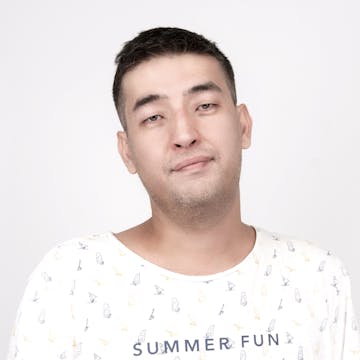Imagine you're embarking on a new project that has the potential to be a game-changer. However, several unknowns could derail its success. To mitigate risks and ensure a smooth journey, you should conduct a pre-mortem with your team.
This guide will walk you through the pre-mortem process, explaining its meaning and definition, while offering practical steps to run a successful pre-mortem in project management.
Pre-mortem meaning
A pre-mortem, by definition, is a strategic technique in project management where a team anticipates the potential reasons for failure before a project even begins. Unlike traditional risk management approaches, a pre-mortem exercise assumes the project has already failed and then works backward to identify what might have gone wrong. This preemptive technique helps teams surface hidden risks, allowing them to take corrective actions early on.

Classical pre-mortem template
Who should participate in a pre-mortem?
The project manager or Scrum master facilitates pre-mortems, but the entire project team should be actively involved. The diversity of perspectives brought to the table during a pre-mortem increases the likelihood of identifying potential future risks and proactively preventing them.
Here's who should typically be involved:
- Core team: Project managers, team leads, and key team members.
- Cross-functional partners: Individuals from other departments who have a stake in the project's success.
- Subject matter experts: People with deep knowledge of the project's domain or specific tasks.
Pre-mortem vs. Post-mortem
The difference between pre-mortem and post-mortem lies in a timeline.
A pre-mortem in project management is conducted before the project begins, identifying potential risks before they occur.
Post-mortem is conducted after project completion; this retrospective analysis looks at what went well and what failed to improve future projects.
Essentially, pre-mortems are about prevention, while post-mortems are about reflection and learning.
7 steps to run in the pre-mortem meeting
The pre-mortem analysis begins by gathering key stakeholders and imagining a project failure, then systematically identifying, discussing, and mitigating the reasons behind that failure. By following these main steps, teams can transform this hypothetical failure into actionable insights, ensuring smoother project execution.
Below is a step-by-step guide on how to run a pre-mortem, from brainstorming risks to developing preventive strategies.
Step 1. Establish the project plan
A well-structured plan provides a solid foundation for your pre-mortem. Essential components of a project plan:
- Goals: Clearly defined objectives for the project.
- Success metrics: Measurable indicators to track progress and achievement.
- Stakeholders: Individuals or groups with an interest in the project's outcome.
- Scope and budget: The project's boundaries and financial resources.
- Milestones and deliverables: Key checkpoints and outputs.
- Timeline and schedule: A detailed project timeline.
- Communication plan: Strategies for keeping stakeholders informed.
Step 2. Assemble the team
Gather all stakeholders, including team members and project managers, to contribute diverse perspectives. This is critical in both project pre-mortems and product pre-mortems in product management.
Step 3. Share the plan
Ensure that all team members have a clear understanding of the project plan. This will facilitate effective brainstorming during the pre-mortem. Consider sharing additional documents like project roadmaps, charters, or business cases for complex initiatives
Step 4. Conduct the brainstorming session:
- Encourage team members to brainstorm potential risks independently, ensuring unbiased thinking.
- Create a safe space. Establish ground rules for open and honest discussion, fostering a collaborative environment.
- Use a whiteboard, collaborative tool, or document to capture all brainstorming ideas.
Step 5. Prioritize risks
Not all risks identified in a pre-mortem are equally critical. To focus your efforts effectively, prioritize risks based on their likelihood of occurrence and their potential severity. Work with these questions:
- Likelihood: How likely is the risk to occur?
- Severity: What would impact the project if the risk materializes?
High likelihood: Code integration conflicts arise, leading to delays in the CI/CD pipeline.
Low likelihood: A minor tool malfunction temporarily slows down the development team but is resolved quickly.
High severity: A critical security vulnerability is discovered late in development, requiring a significant redesign.
Low severity: Minor delays in documentation completion, with little impact on overall delivery.
Easy to solve: Miscommunication between the development and QA teams causes minor delays in bug tracking and resolution.
Step 6. Develop mitigation strategies
For each identified risk, develop strategies to mitigate them. The pre-mortem exercise is about proactive planning—assigning responsibilities and creating action plans to address potential issues. Key considerations:
- Action plans — Create specific strategies to address identified risks.
- Contingency planning — Develop backup plans in case risks materialize.
- Assign responsibilities — Clearly assign tasks and deadlines for implementing mitigation strategies.
Step 7. Review and revise the project plan
Incorporate risk mitigation strategies into your project plan. Regularly review your risk register and adjust mitigation strategies as needed throughout the project lifecycle.
Questions for pre-mortem facilitation
Here are questions for pre-mortem facilitation to encourage critical thinking, risk identification, and the development of mitigation strategies across different areas:
Probing deeper:
- Uncovered concerns: "Are there any hidden risks or uncertainties that we haven't fully explored?"
- Underlying assumptions: "What are the key assumptions driving our project, and what could happen if they prove false?"
- Root causes: "If this risk materializes, what are the underlying causes we should address?"
Active mitigation:
- Preventive measures: "What proactive steps can we take to mitigate this risk before it becomes a problem?"
- Contingency planning: "If the risk occurs, what alternative actions or strategies can we implement?"
Identifying blind spots:
- Overlooked areas: "Are there any areas of the project that we might be overlooking or underestimating?"
- Unintended consequences: "Could our actions have unintended negative side effects?"
- Obstacles: "What potential roadblocks or delays might hinder our progress?"
Creative thinking:
- Worst-case scenarios: "If everything goes wrong, what would be the worst-case outcome?"
- Unexpected challenges: "Are there any unexpected risks or challenges that we haven't considered?"
Pre-mortem meeting timing
Ideally, conduct a pre-mortem 1–3 months before the project launch. This allows sufficient time to identify and address potential issues.
The meeting itself is structured to last one hour:
- Kickoff & prompt (10 min)
- Brainstorming (10 min)
- Voting & group discussion (30 min)
- Draft an action plan (10 min)
Pre-mortem fun technique: Tigers, Paper Tigers, and Elephants
During the brainstorming stage, you can try another technique to amuse participants. It is called Tigers, Paper Tigers, and Elephants. The categorization is simple:
|
A genuine threat that poses a significant risk to our success |
|
A perceived threat that may seem alarming but you personally do not find concerning (even if others might) |
|
An issue or concern that you believe the team is avoiding or not discussing openly. |
This new lexicon, created during the pre-mortem, fosters a culture of psychological safety. Team members will feel more comfortable raising concerns and discussing potential challenges. This open communication can help identify and address issues early on, preventing them from escalating into major problems.
To wrap up
By mastering the art of pre-mortems, you can significantly enhance your project's success by proactively identifying and mitigating potential risks. By following the step-by-step guide outlined in this article, you can foster a culture of risk awareness, improve team collaboration, and make informed decisions that lead to better outcomes.
If you're looking to enhance your project risk management strategies or need expert guidance, Mad Devs is here to help. Contact us now for free consultation to explore how we can support your projects and ensure they’re set up for success from the start













